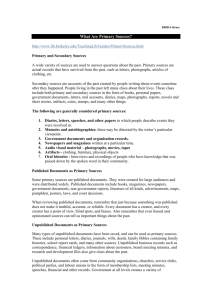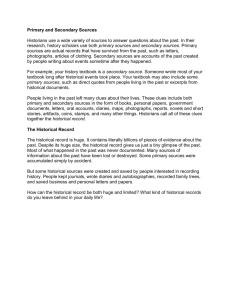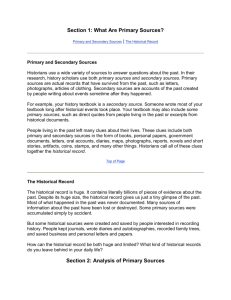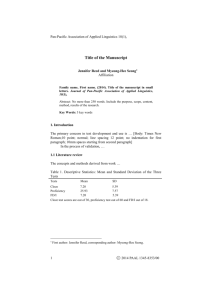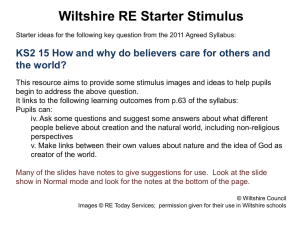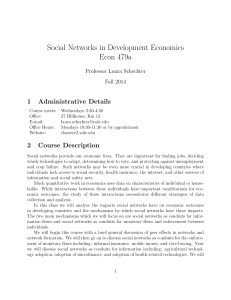2014 What are Primary Sources
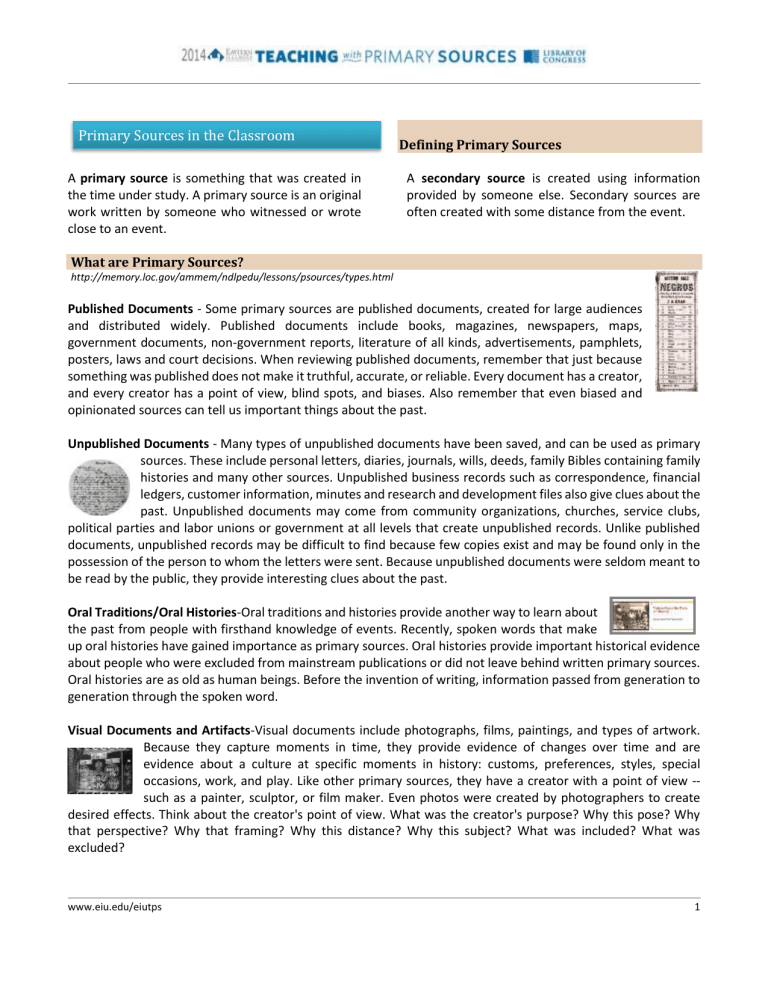
Primary Sources in the Classroom
A primary source is something that was created in the time under study. A primary source is an original work written by someone who witnessed or wrote close to an event.
What are Primary Sources? http://memory.loc.gov/ammem/ndlpedu/lessons/psources/types.html
Defining Primary Sources
A secondary source is created using information provided by someone else. Secondary sources are often created with some distance from the event.
Published Documents - Some primary sources are published documents, created for large audiences and distributed widely. Published documents include books, magazines, newspapers, maps, government documents, non-government reports, literature of all kinds, advertisements, pamphlets, posters, laws and court decisions. When reviewing published documents, remember that just because something was published does not make it truthful, accurate, or reliable. Every document has a creator, and every creator has a point of view, blind spots, and biases. Also remember that even biased and opinionated sources can tell us important things about the past.
Unpublished Documents - Many types of unpublished documents have been saved, and can be used as primary sources. These include personal letters, diaries, journals, wills, deeds, family Bibles containing family histories and many other sources. Unpublished business records such as correspondence, financial ledgers, customer information, minutes and research and development files also give clues about the past. Unpublished documents may come from community organizations, churches, service clubs, political parties and labor unions or government at all levels that create unpublished records. Unlike published documents, unpublished records may be difficult to find because few copies exist and may be found only in the possession of the person to whom the letters were sent. Because unpublished documents were seldom meant to be read by the public, they provide interesting clues about the past.
Oral Traditions/Oral Histories-Oral traditions and histories provide another way to learn about the past from people with firsthand knowledge of events. Recently, spoken words that make up oral histories have gained importance as primary sources. Oral histories provide important historical evidence about people who were excluded from mainstream publications or did not leave behind written primary sources.
Oral histories are as old as human beings. Before the invention of writing, information passed from generation to generation through the spoken word.
Visual Documents and Artifacts-Visual documents include photographs, films, paintings, and types of artwork.
Because they capture moments in time, they provide evidence of changes over time and are evidence about a culture at specific moments in history: customs, preferences, styles, special desired effects. Think about the creator's point of view. What was the creator's purpose? Why this pose? Why that perspective? Why that framing? Why this distance? Why this subject? What was included? What was excluded? occasions, work, and play. Like other primary sources, they have a creator with a point of view -- such as a painter, sculptor, or film maker. Even photos were created by photographers to create www.eiu.edu/eiutps 1

